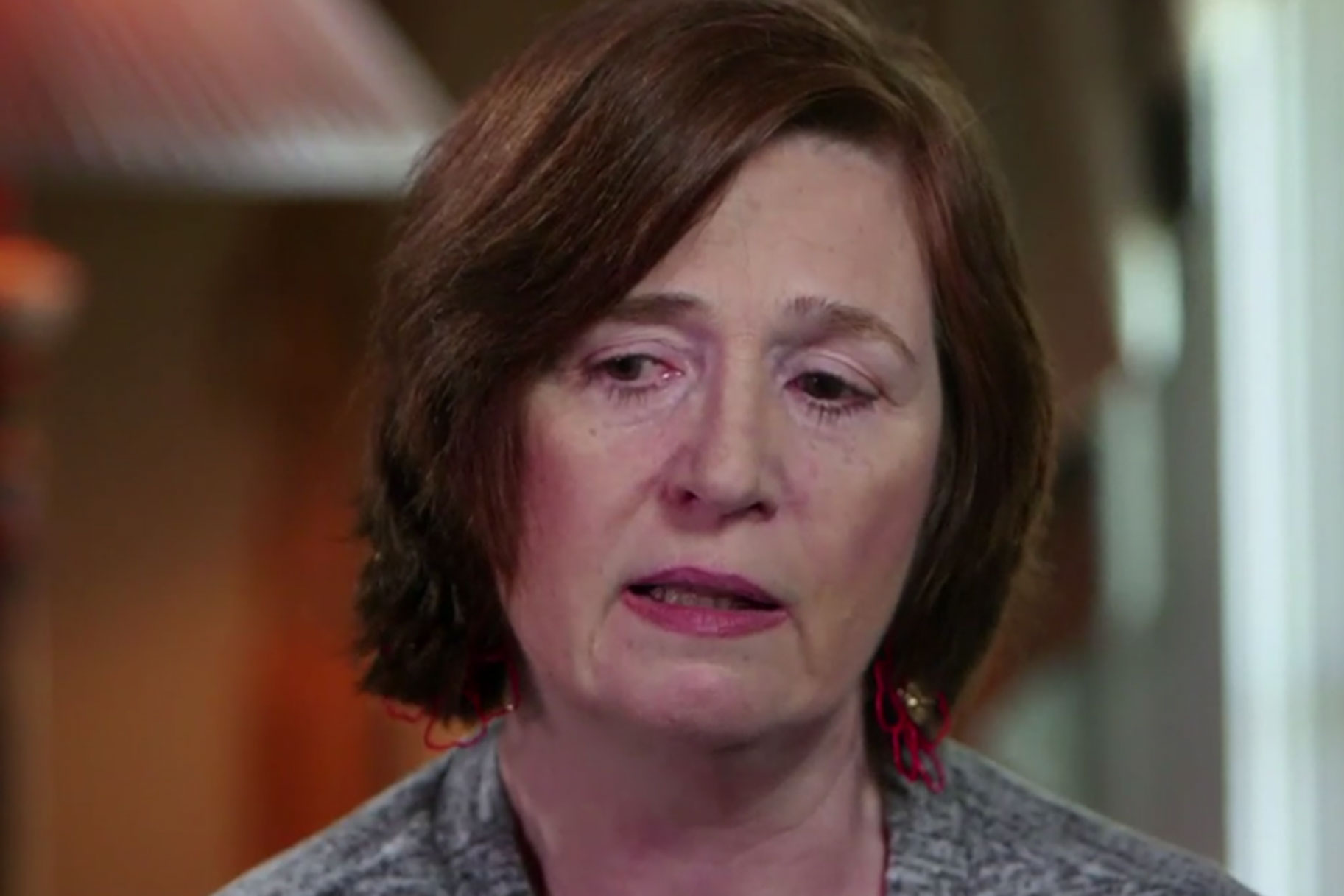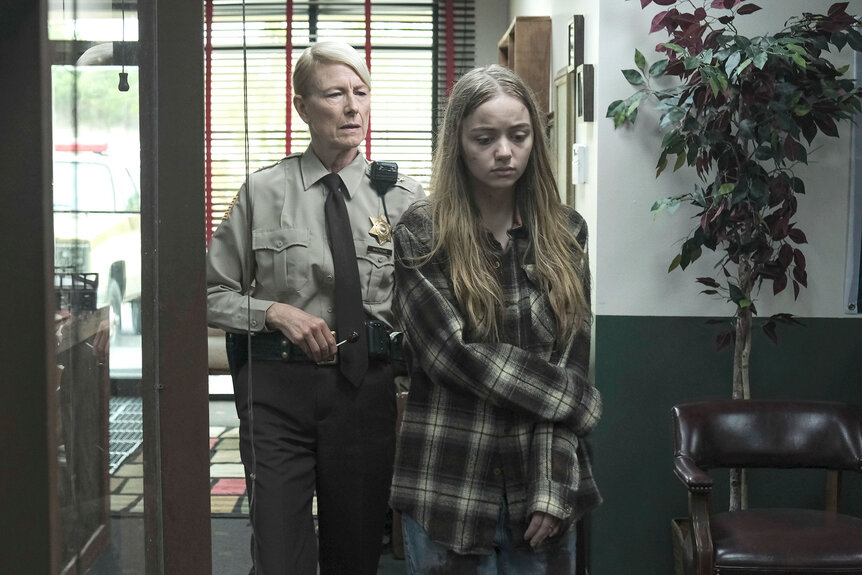Create a free profile to get unlimited access to exclusive videos, breaking news, sweepstakes, and more!
‘He Was A Master At Manipulating The Mind,' Real Woman Behind Lifetime Movie Speaks Out On Being Kidnapped And Brainwashed
In the case that inspired "Murder to Remember," Candra Torres initially told police that a stranger named Thomas Brown shot her husband Julio Torres by accident but later she changed her story and said he murdered him before holding her captive for days.

After a stranger lured a young newlywed couple deep into the Oregon wilderness, he killed the man and brainwashed his teen wife into thinking he was her hero and not a killer.
The local couple — Julio, 21, and Candra Torres, 16 — had driven to Mount Hood so they could celebrate their first year wedding anniversary in October of 1976. While trying to find a good fishing location, a stranger named Thomas Brown led them astray. He lured them to an isolated location where he ended up shooting Julio and the couple’s dog Rusty.
That left Candra stuck in the wilderness alone with the strange man and murderer. She was with him for three days before they returned to civilization, where it would take her some time to fully comprehend what exactly happened during that tragic trip.
This harrowing case is the premise for Lifetime’s new movie “A Murder to Remember,” which airs Sunday, Aug. 2 at 8 p.m. EST. It is based on Ann Rule’s writing on the case, included in her 2001 book “Empty Promises” in a section entitled “The Stockholm Syndrome.”
The term “Stockholm Syndrome" refers to a psychological condition in which the victim develops a perceived connection with their captor. It’s a phrase that was popularized following a 1973 Swedish bank hostage incident, the BBC pointed out in 2013. In early 1976, the lawyer representing Patty Hearst — the newspaper heiress who was kidnapped in 1974 by revolutionary militants whom she later helped rob a bank with — claimed she had the syndrome, making the term infamous.
During Brown's eventual 1977 trial, the presiding judge allowed testimony on the mechanisms of Stockholm Syndrome — which was unprecedented at the time, according to Rule. It should be noted that the FBI has called the phenomenon, which is not an official psychiatric disorder, extremely rare.
As both the movie and the book suggest, Candra became a victim of the syndrome after Brown manipulated her into thinking she needed him in the aftermath of Julio’s murder. He then raped her repeatedly, as Candra told fellow kidnapping survivor Elizabeth Smart in a companion special called “A Murder to Remember, Elizabeth Smart: Finding Justice” which airs Sunday 10 p.m. EST, right after the movie.
“He was gonna keep me as his wife and we were going to live up in the mountains,” Candra recalled Brown telling her.
He spewed harsh words and gave off intimidating vibes in the aftermath of the shooting, Candra noted. After she witnessed him shooting her dog, “he got a big smile on his face and he said, ‘I shot your husband too.’ I was in shock.”
The special claims that the first step of brainwashing is the breaking down of the self.
“I thought if I just do everything he says then I’ll survive,” Candra recollected.
Smart said with Candra’s will broken, Brown “dug in.” That’s when, Smart says, step two began: creating a bond by introducing the possibility of salvation.
“He was a master at manipulating the mind,” Candra reflected. “He told me he read a book on mind control.”
At this point, he transformed from a brash man who boasted about killing her husband and dog to a kind man who claimed it was all an accident. At some point, Candra admits, she believed him.
“To protect yourself you want to believe what you're being told because it’s so much less traumatic,” she told Smart.
Brown then told her she was free to go.
Smart said the third step of brainwashing comes with the rebuilding of the self, creating a reality in which she actually needed her capture.
“Everything changed at that point,” Candra reflected. “Instead of being this aggressive man he just seemed different.”
While Brown told Candra she could leave the woods, she didn’t know where she was; they were still deep in the wilderness. She had to ask his help to get her back. He convinced her that he was her friend, and that the murders of her husband and dog were accidental. She even agreed to tell his version of the storyt to law enforcement if he returned her to civilization. She said she felt “totally under his control.”
“At this point you’re almost grateful to this evil person because you’re alive,” she said.
Brown brought her into town but not before stopping at his lawyer’s office; he had a lengthy criminal history already. Then the two, and Brown’s lawyer, walked into the local sheriff’s department where they made a joint statement claiming that Julio was shot by accident. Both Brown and Candra even passed individual polygraphs to verify the statements.
However, days later, Candra could think more clearly and she then remembered that her husband did not die by accident; he was murdered. This story change, in turn, led officials to treat her as a suspicious witness. She failed a polygraph test after adjusting her recollection. Puzzled, Retired Clackamas County detective Jim Byrnes contacted a psychiatrist asking if there was any way someone could fail a polygraph. At this point, he began researching “Stockholm Syndrome.” Eventually, after much pushing from Candra's family, Brown was indicted and eventually convicted of Julio's murder.
Even though the phenomenom “Stockholm Syndrome" helped get justice for Julio's death, Smart’s special does point out that the term could use another look. Dr. Rebecca Bailey, a psychologist interviewed for the special, called the phrased “offensive” and outdated in the way it’s depicted. She said it’s not so much that survivors end up feeling connected to their captors; rather, she said, they do what they have to do to survive. She said calling the condition “an appeasement process” would be more accurate.
“When you are terrorized you will do what you need to do to survive in the hopes that you will get out of that situation,” she noted in the special.
Smart — who was kidnapped in 2002 at age 14 by Brian David Mitchell, and then held against her will by his accomplice Wanda Barzee for nine months — pointed out in the show that she never loved her captors. She said she just made a conscious decision that she would do what she needed in order to survive.




















